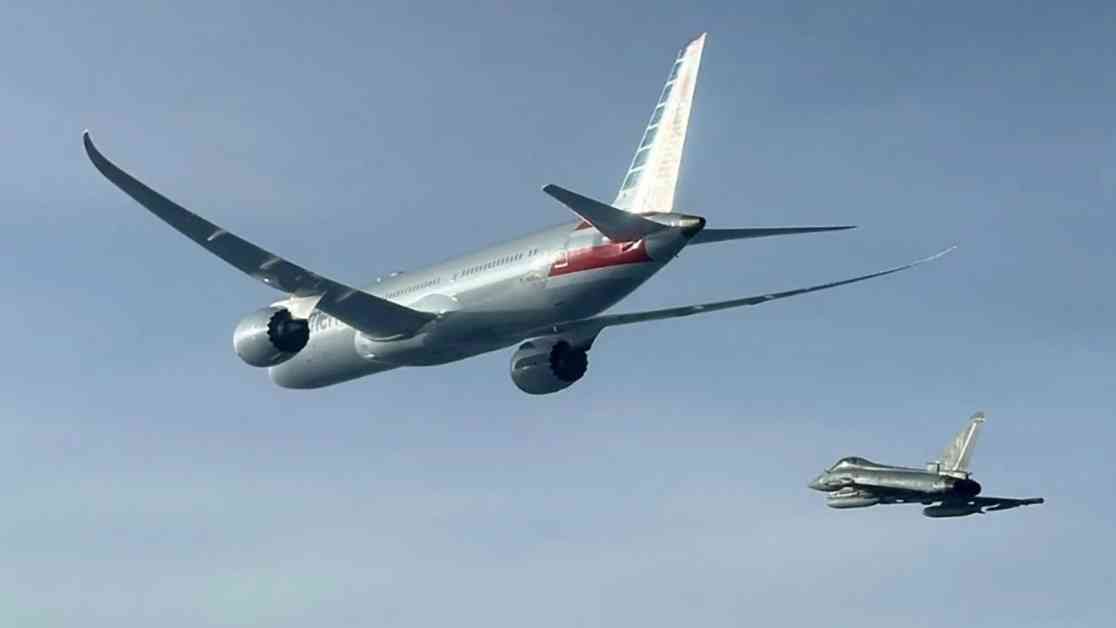Two fighter jets were seen escorting an American Airlines flight after a bomb scare caused the plane to divert its route from New York City to New Delhi, landing in Rome. The tense situation unfolded mid-air over the Caspian Sea, where the flight, identified as Flight 292, received a bomb threat. Passengers and crew onboard Flight 292 found themselves in a harrowing ordeal as the aircraft was shadowed by fighter jets before landing at Rome’s Leonardo da Vinci Airport. The bomb scare was later deemed as “non-credible,” but the incident left many shaken and uncertain about the safety of their journey.
Unraveling the Bomb Scare
As Flight 292 soared through the skies en route to New Delhi, the crew was faced with a chilling reality when a bomb threat was reported. The aircraft, carrying a mix of passengers and crew, was swiftly diverted to Rome, Italy, after authorities received word of the potential security threat. The decision to ground the plane in Rome was made as a precautionary measure to ensure the safety of all individuals onboard, as well as those on the ground. Passengers and crew were understandably anxious as they disembarked the plane, unsure of the gravity of the situation and the impact it would have on their travel plans.
Yash Raj, a passenger who experienced the bomb scare firsthand, commended the cabin crew for their professionalism and quick thinking during the incident. He emphasized the importance of remaining calm in such situations and highlighted the efforts of the crew in ensuring the safety and well-being of everyone onboard. Despite the initial shock and uncertainty, passengers were reassured by the swift response of the airline and authorities in handling the bomb threat with caution and diligence. The incident served as a stark reminder of the unpredictable nature of air travel and the importance of stringent security measures to protect passengers and crew.
Recovery and Resilience
Following the bomb scare incident, American Airlines worked closely with local authorities to assess the situation and provide updates to affected passengers. The airline reiterated its commitment to safety and security, emphasizing the well-being of its customers as a top priority. Passengers were accommodated overnight in Rome to allow the crew sufficient rest before continuing their journey to New Delhi the following day. The resiliency of both passengers and crew in the face of adversity was evident as they prepared to resume their travel plans despite the unsettling experience.
As American Airlines navigated through the aftermath of the bomb scare, the airline found itself grappling with the repercussions of a recent tragic incident involving a jet collision with a helicopter over Washington DC. The crash, which claimed the lives of 67 individuals, raised questions about safety protocols and operational oversights within the airline industry. Transportation Secretary Sean Duffy acknowledged the preventability of the crash, shedding light on the need for comprehensive safety measures to avoid such catastrophic events in the future. The recovery efforts following the crash, including the retrieval of crucial black box data, underscored the importance of thorough investigations and accountability in addressing aviation disasters.
In the wake of these unsettling events, American Airlines and the aviation industry as a whole faced heightened scrutiny and calls for enhanced safety standards. The resilience of passengers, crew, and airline personnel in overcoming challenges and maintaining a commitment to safety highlighted the unwavering dedication to ensuring secure and reliable air travel for all. Despite the turbulence and uncertainties that accompany air travel, the collective efforts of individuals and organizations to prioritize safety and security serve as a beacon of hope and reassurance in an ever-evolving industry.


